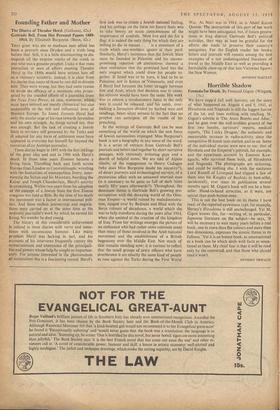Horrible Shadow
Formula for Death. By Fernand Gigon. (Wingate, 15s.)
WE have supp'd full with horrors; yet the story of what happened on August 6 and 9, 1945, at Hiroshima and Nagasaki is still the biggest horror of the lot, and loses nothing with retelling. M. Gigon's subtitle is The Atom Bombs and After,' and he goes over the well-trodden ground of the first two bombs, survivors' reports, medical reports, The Lucky Dragon,' the authentic and measurable increase in radio-activity since the competitive H-bomb tests started, and so on. Some of the individual stories were new to me; that of Hirohata and the Emperor's portrait, for example, and the eyewitness account by Enemon Kaw- aguchi, who survived them both, of Hiroshima and Nagasaki. The photographs are sickening, and could be nothing else. I wish the unctuous Lord Russell of Liverpool had slipped a few of them into his Knights of Bushido (a best-seller, incidentally, ever since its publication several months ago). M. Gigon's book will not be a best- seller. Hand-to-hand atrocities, as it were, are spicier than push-button ones.
This. is not the best book on its theme I have read; of the reported eyewitness type, for example, Hersey's Hiroshima is still unchallenged. Yet M. Gigon knows this, for—writing of, in particular, Japanese literature on the subject—he says, 'It will be necessary to wait many years before a real book, one in more than flat colours and more than two dimensions, expresses the atomic theme in its fullness.' Yet it is an honest book, as unsensational as a book can be which deals with facts as sensa- tional as these. My chief fear is that it will be read only by the converted, and that those who should read it won't.
ANTHONY TH E






























 Previous page
Previous page